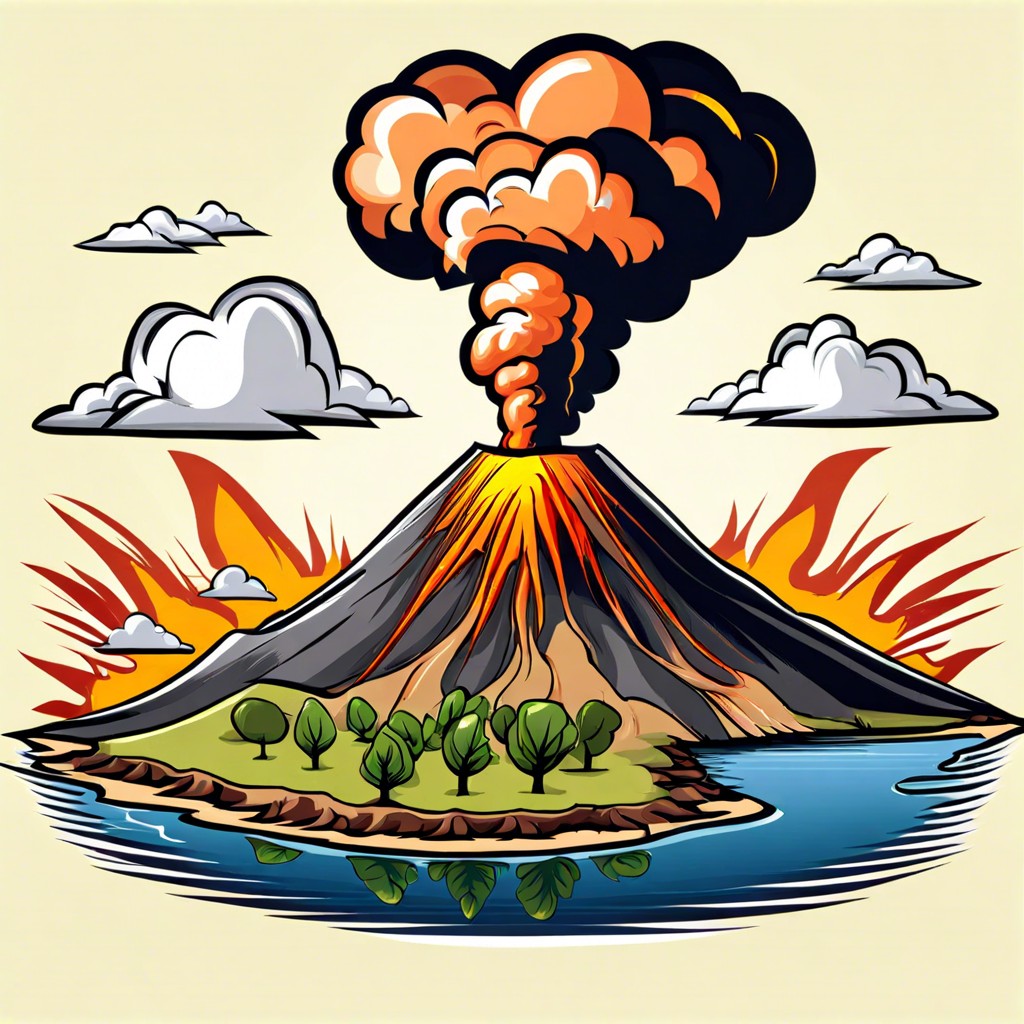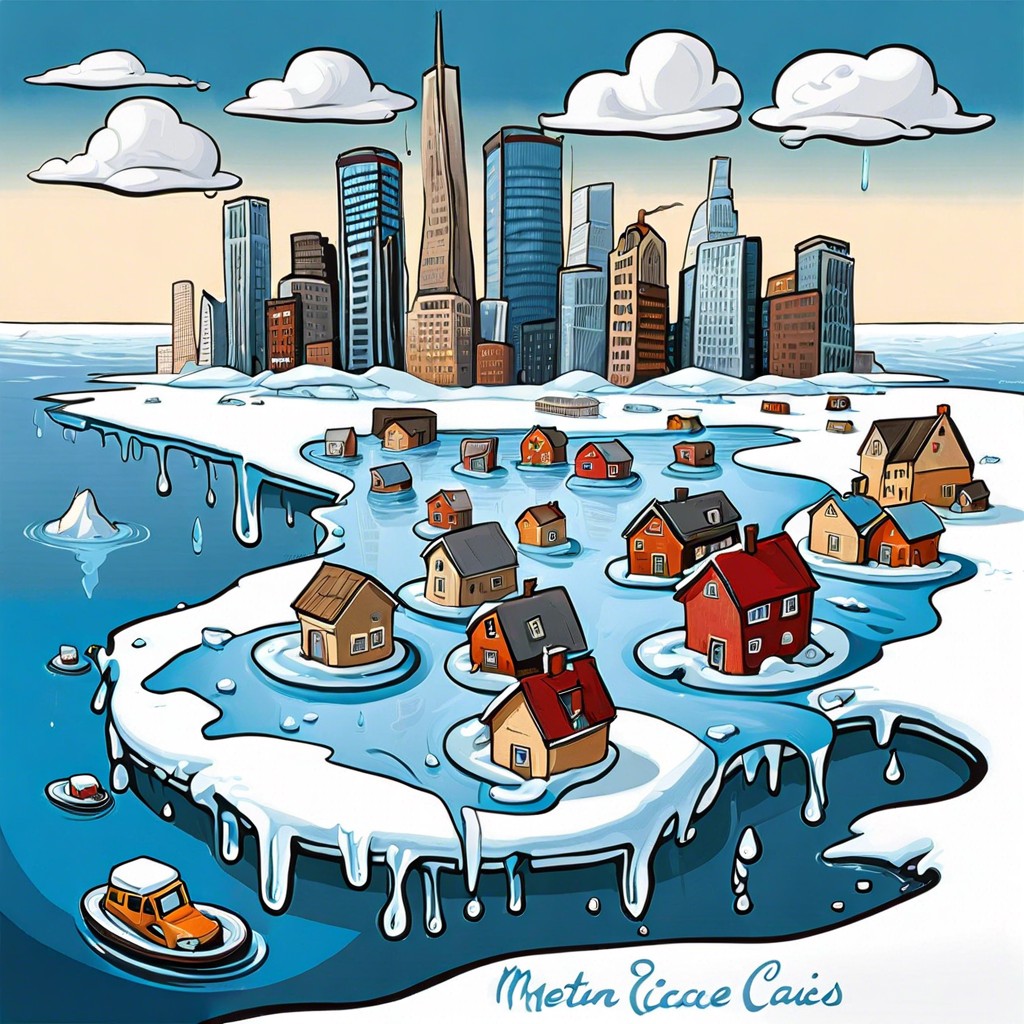Discover what could happen if Yellowstone’s supervolcano erupts and how it might affect the world around us.
Imagine waking up to a sky painted with volcanic ash and the distant rumble of something big, really big. Yellowstone’s supervolcano has finally decided to stretch its legs. Sounds like a blockbuster disaster movie, right? But it’s a scientific possibility with immediate and far-reaching consequences. From environmental upheaval to global climate shifts, economic chaos to emergency strategies, and even long-term effects on our planet’s ecosystems, this isn’t just speculation—it’s a blueprint for potential catastrophe. Buckle up!
Key takeaways:
- Immediate devastation: pyroclastic flows, ashfall, toxic gases, disrupted wildlife.
- Global impact: volcanic winter, food shortages, harsh weather changes, disrupted ocean currents.
- Economic turmoil: billions in damages, disrupted trade, tourism collapse, higher insurance costs.
- Disaster prep: evacuation plans, stockpiling, communication, shelters, regular drills.
- Long-term effects: charred forests, altered migration patterns, ecological adaptation.
Immediate Environmental Impact

Picture this: One minute you’re hiking through Yellowstone, soaking in the majestic views. The next minute, the ground shakes and narrows like it’s just taken a gulp of espresso. Boom! The park becomes an ash-spewing beast.
First off, pyroclastic flows. These fast-moving avalanches of hot gas and volcanic matter could obliterate everything in their path. Not ideal for your picnic plans.
Then, there’s the ashfall. A massive eruption could deposit layers of ash over thousands of miles, turning a sunny day into a scene from an apocalyptic movie. Got crops? Dust off your “Welcome to the Dust Bowl 2.0” sign.
And let’s not forget the toxic gases. Gases like sulfur dioxide and carbon dioxide would be released, affecting air quality. Your cute little N95 mask might not cut it here.
Imagine the beautiful landscapes draped in gray ash, rivers choked, and wildlife scrambling. Not exactly a day at the zoo.
Global Climate Consequences
The ash cloud from a Yellowstone eruption could blanket the skies, blocking out sunlight. This isn’t just a gloomy few days; we’re talking global dimming. With less sunlight, temperatures could plunge, potentially throwing the world into a “volcanic winter.”
Crops need sunlight like we need coffee on Monday mornings. Less sunlight means failing harvests, leading to food shortages. Imagine trying to explain to your kids why there’s no mac and cheese. Tough times.
Then there’s the sulfur dioxide. This mischievous gas forms sulfuric acid droplets in the atmosphere, reflecting even more sunlight away. Acid rain might also become a regular, albeit unpleasant, weather forecast.
Changes in the jet stream could stir up new weather patterns, maybe harsher winters in some places, and hotter summers in others. Mother Nature’s way of keeping us on our toes.
And don’t forget the oceans. Cooler temperatures could affect ocean currents, risking a domino effect on marine ecosystems. Those beach holidays? They might become a myth of the past.
Economic Repercussions
Don’t think for a second that the economy would just sit pretty during a Yellowstone eruption. Job markets? Say goodbye to stability. Agriculture? Wrecked. Let’s break it down, fast and easy.
First, we’re talking about billions of dollars in damages. Forget about fixing potholes; entire infrastructures would need rebuilding. Roads, bridges, you name it, they’d all be begging for repairs.
Next, trade would take a nosedive. Ash clouds grounding flights? Absolutely. Shipping routes disrupted? You bet. Supply chains would be in total disarray. Want to import your favorite overseas gadget? Good luck with that.
Tourism? A vital industry would become a ghost of its former self. No one’s visiting an ash-covered wasteland for selfies.
And let’s not forget insurance claims. Those would skyrocket. Companies shelling out massive compensation means higher premiums for everyone else. Feel that pinch yet?
In summary, a Yellowstone eruption would blow a huge hole in the economy, turning businesses and financial sectors upside down and inside out.
Disaster Preparedness and Response
Alright, folks, here’s where we put on our superhero capes and dive into the nitty-gritty of readiness. Just imagine, a cauldron bubbling under Yellowstone—what would we need to save the day?
First off, evacuation plans are our best friends. Communities near Yellowstone should have clear routes and designated safe zones. No one likes traffic jams, especially not during a volcanic apocalypse.
Next, let’s talk stockpiles. Think canned food, medical supplies, bottled water—enough to last for weeks, maybe months. If you’re lucky, your basement will look like a Costco on steroids.
Communication infrastructure is vital. Keeping lines open ensures that alerts and updates reach everyone fast. Ham radios could make a comeback, maybe you’ll even get to say “Roger that” for real.
Don’t forget about shelters. They should be robust and well-stocked, ready to host displaced folks for extended periods. Think of it as camping, but with more lava and fewer s’mores.
Finally, practice makes perfect. Regular drills can turn panic into precision, making sure that when the big moment arrives, everyone’s ready.
Stay vigilant, stay prepared, and let’s just hope Old Faithful keeps its cool.
Long-term Ecological Shifts
Think of Yellowstone’s eruption like a disorganized party crasher, barging in and causing chaos. Forests would be charred, rivers tainted, and wildlife habitats turned into ashy wastelands.
Plant life, not exactly fans of volcanic ash, would take eons to recover. New species could step in, viewing the disaster as prime real estate. Who knew weeds had dreams, right?
Animal migration patterns might radically change. Traditional homes turned unlivable, forcing critters to find new neighborhoods. “Moving day” would be the understatement of the century.
Aquatic life wouldn’t escape the chaos either. Rivers and lakes choking on ash would challenge even the hardiest fish species. Think of it as an extreme version of that one polluted pond in the city park.
And, like any good disaster movie, humans would adapt slowly. Agriculture might need rethinking. Growing crops in ashes isn’t exactly a green thumb activity. Maybe we’ll discover some super-crop that loves volcanic soil. Science fiction, anyone?
In short, both flora and fauna would embark on either a fascinating journey of adaptation or a frustrating descent into survival mode.




